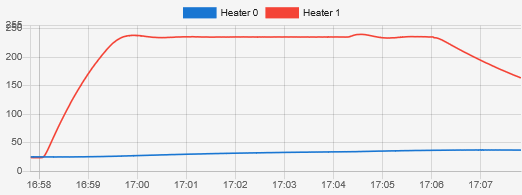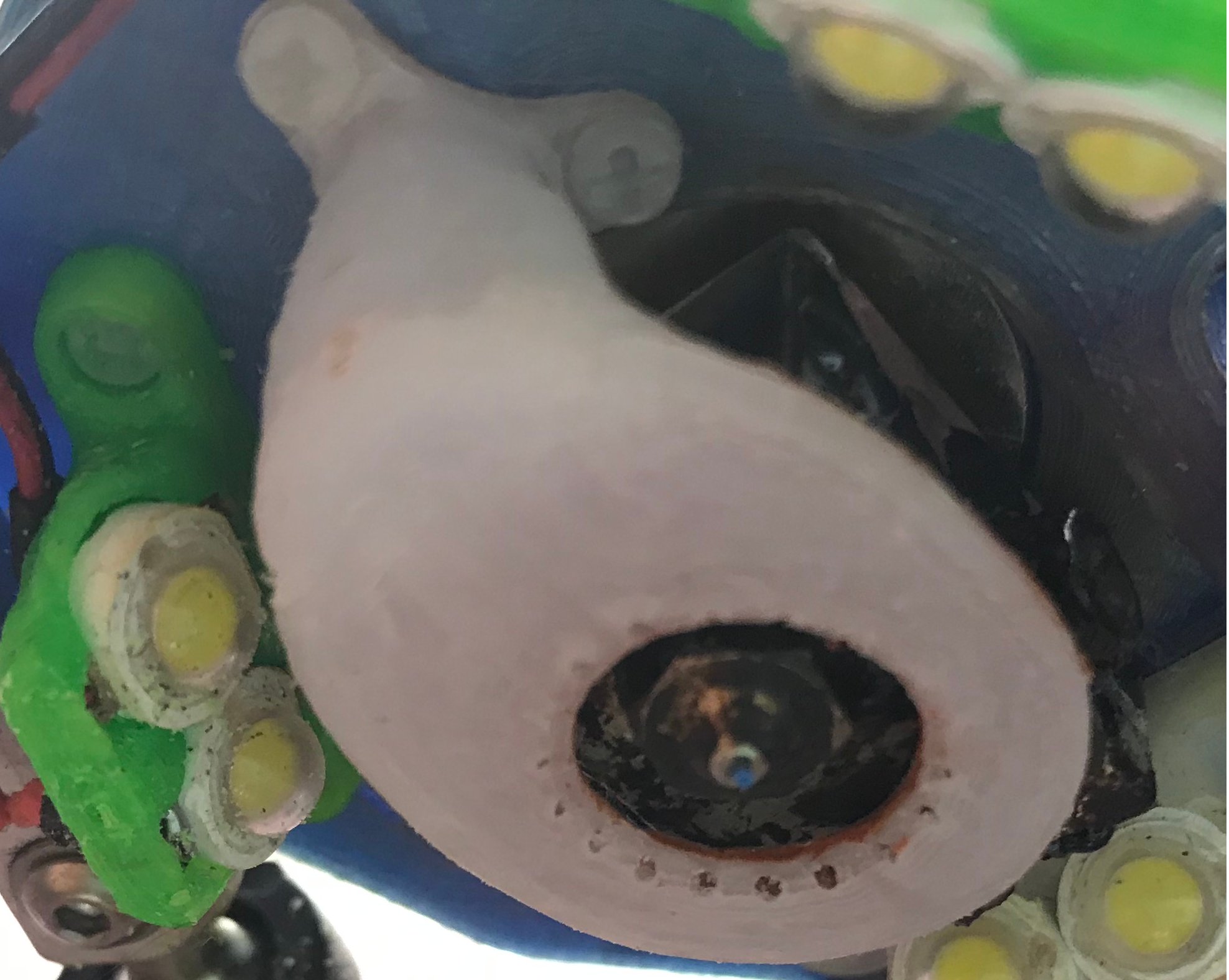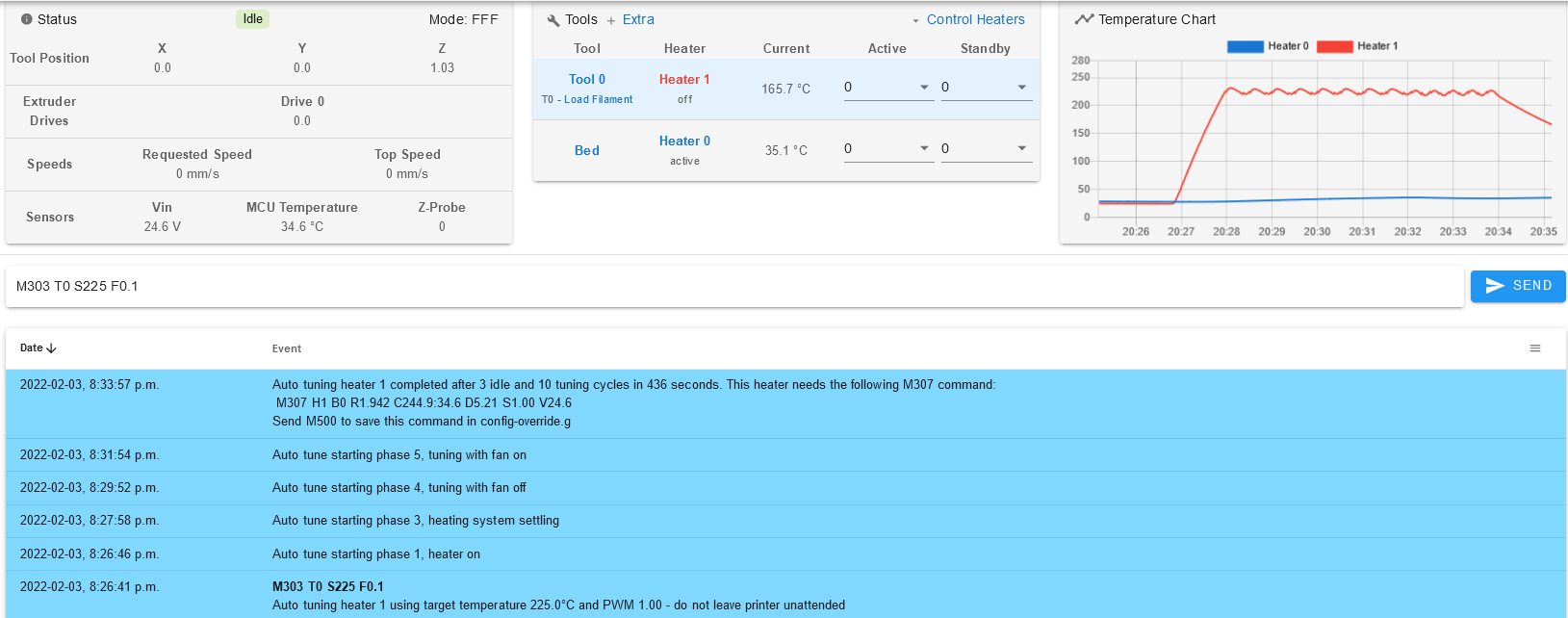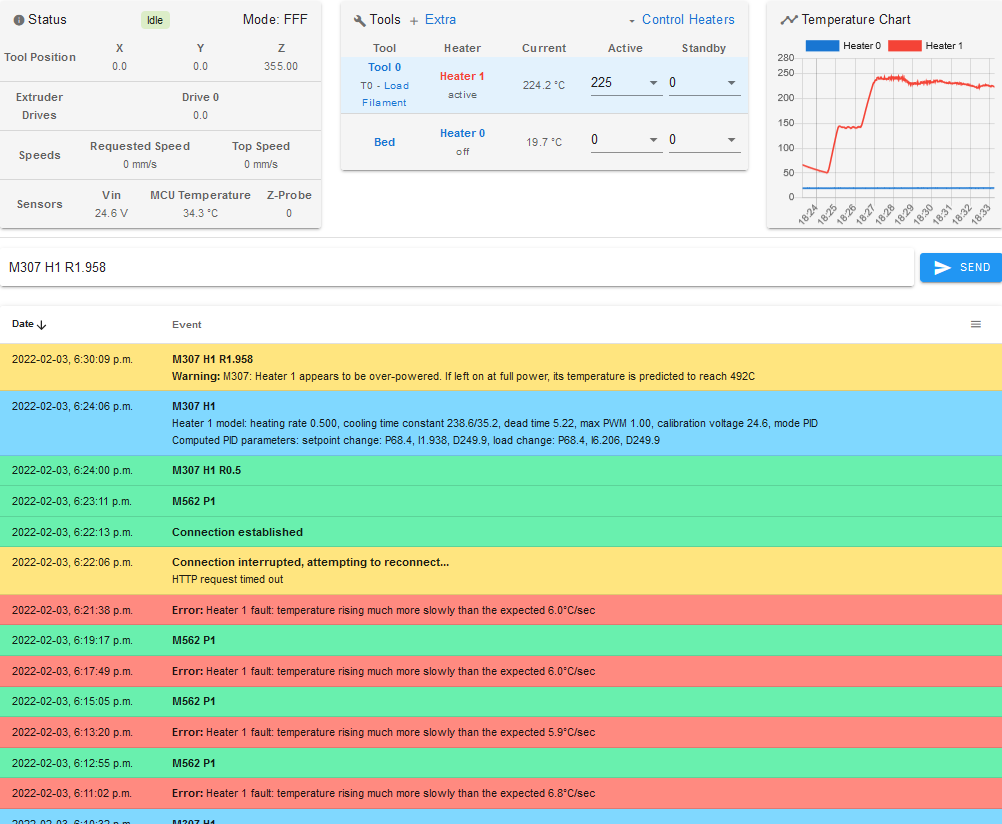It turns out that there is a down spike or up spike in the hotend temperature signal on my machine that appears to coincide with the hotend heater turning on and off respectively. Presumably these spikes are, quite understandably, interfering with the auto tuning algorithm and are causing it to produce parameters which result in "temperature rising much more slowly than the expected" heater fault errors.
My first thought is that, due to my convoluted 12/24 VDC power system - v2max_duet_upgrade_dual_power_accelerometer_v1.0.pdf, there is some sort of VSSA-DC ground mismatch occurring when the heater goes from on to off during the auto tuning cycle. The effect is greater at higher temperatures - see below. My thinking is that, as thermister resistance is lower at higher temperatures producing a lower voltage at the Duet input pin, any change in VSSA-DC ground levels would have a relatively larger impact at higher temperature.
To my mind, the drop in temperature occurring when the hotend heater turns off suggests a lowering of the DC ground ground level relative to VSSA producing a higher voltage at the Duet input and visa versa when the hotend heater turns on.
The image below shows the difference in the temperature signal spikes at 245 vs 195C and the zoomed in lower panels show the point in the auto tuning process when the pump is turned on as well as the behavior reported by the tuning algorithm. Looking at the 245C temperature signal it is amazing that the algorithm comes up with anything at all!
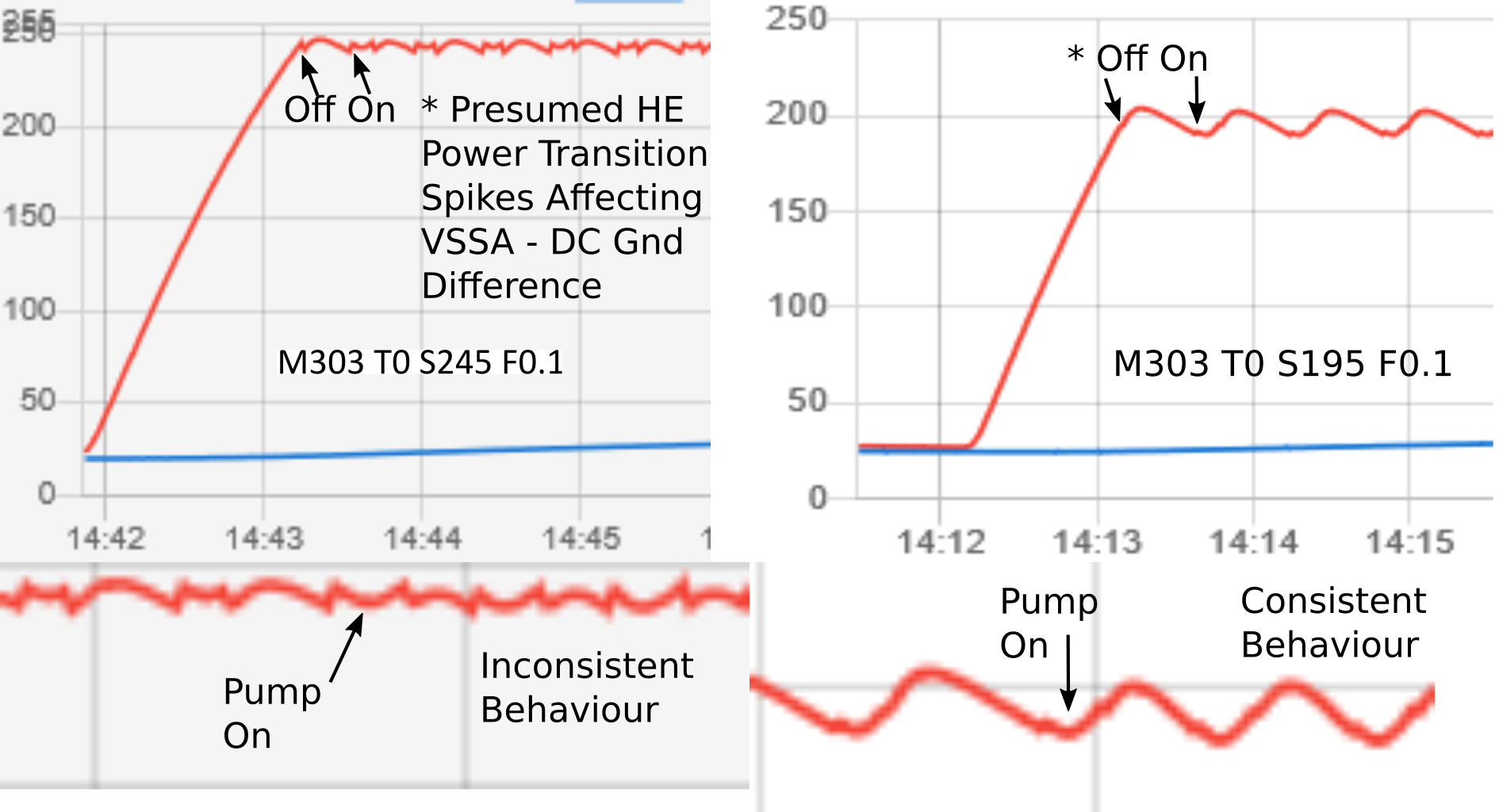
For the moment, in order to have good response to cooling pump transitions etc, i will need to hand tune a set of parameters for every 5C or so due to the increased spiking effect at higher temperatures causing instability. Temperature chart below shows response for 225C "optimized" tuning at initially 225, then 235 and finally 230C.
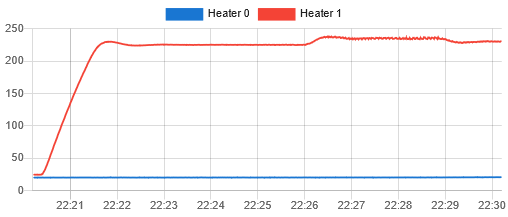
The approach i took to get past the expected rise rate error was to (somewhat counterintuitively to my dim mind) lower the R and/or C values until the error resolved, get the hotend up to temperature, then increase R until the "spikiness" in the temperature response at steady state resolved followed by adjustment of the dead time to remove the slow oscillation but retain responsiveness to cooling changes. For most temperatures, a fairly significant reduction of the auto tuning generated C parameters was required in order to avoid the expected rise error heater fault after the manual adjustments.
On the off chance it may be of some to use to someone running into a similar situation with a less than ideal hotend temperature signal causing the auto tuning algorithm to generate expected rise rate error heater faults, some data from my testing and resolution process is included below.
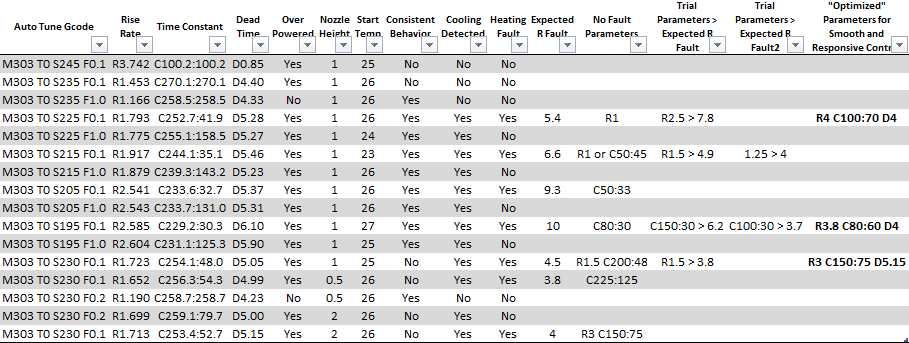
It is interesting to note the effect of nozzle height above the bed (last 4 lines of the table above) and cooling pump speed on the cooling off:on C parameters. Based on some flow visualization studies i did with the pump duct, i suspect the paradoxical reduction in C parameter differences at full pump speed may be due to a bigger proportion of each air jet stream escaping under the lower surface of the duct at higher velocities and consequently reducing impingment on the nozzle.
I will try another hotend with the same heater/thermister setup shortly to see if the problem follows and at some point in the next few months will finally convert the machine to straight 24V.
